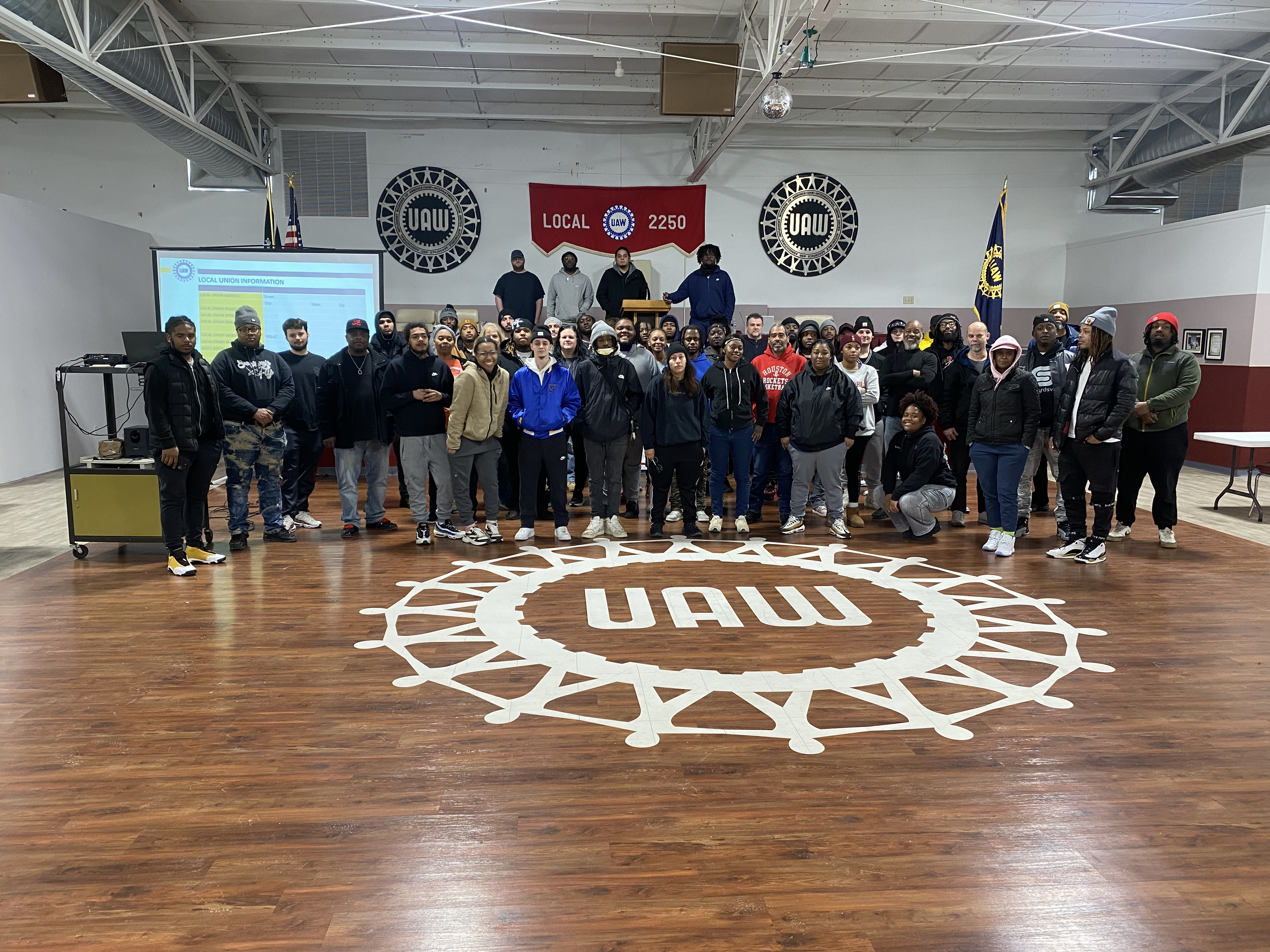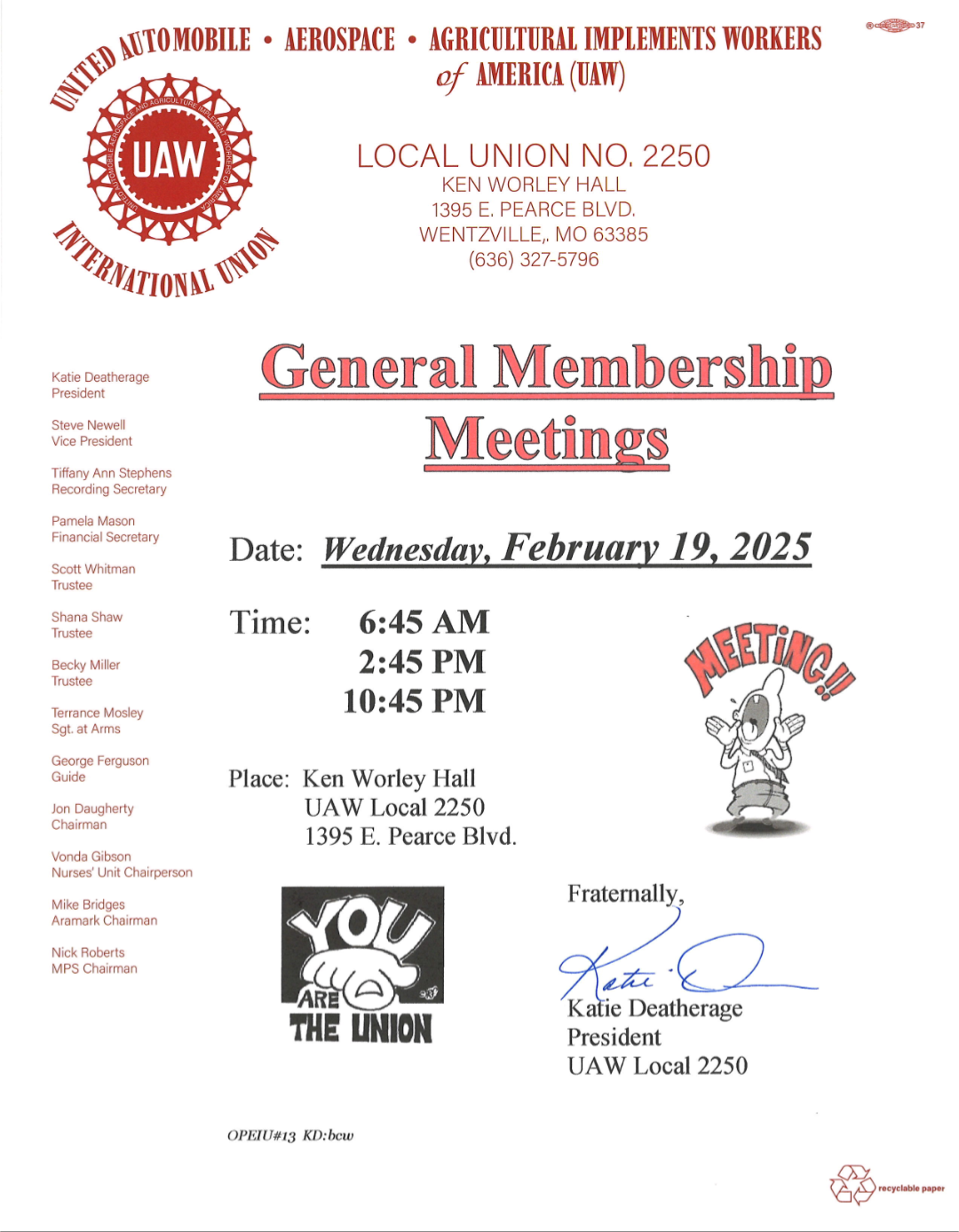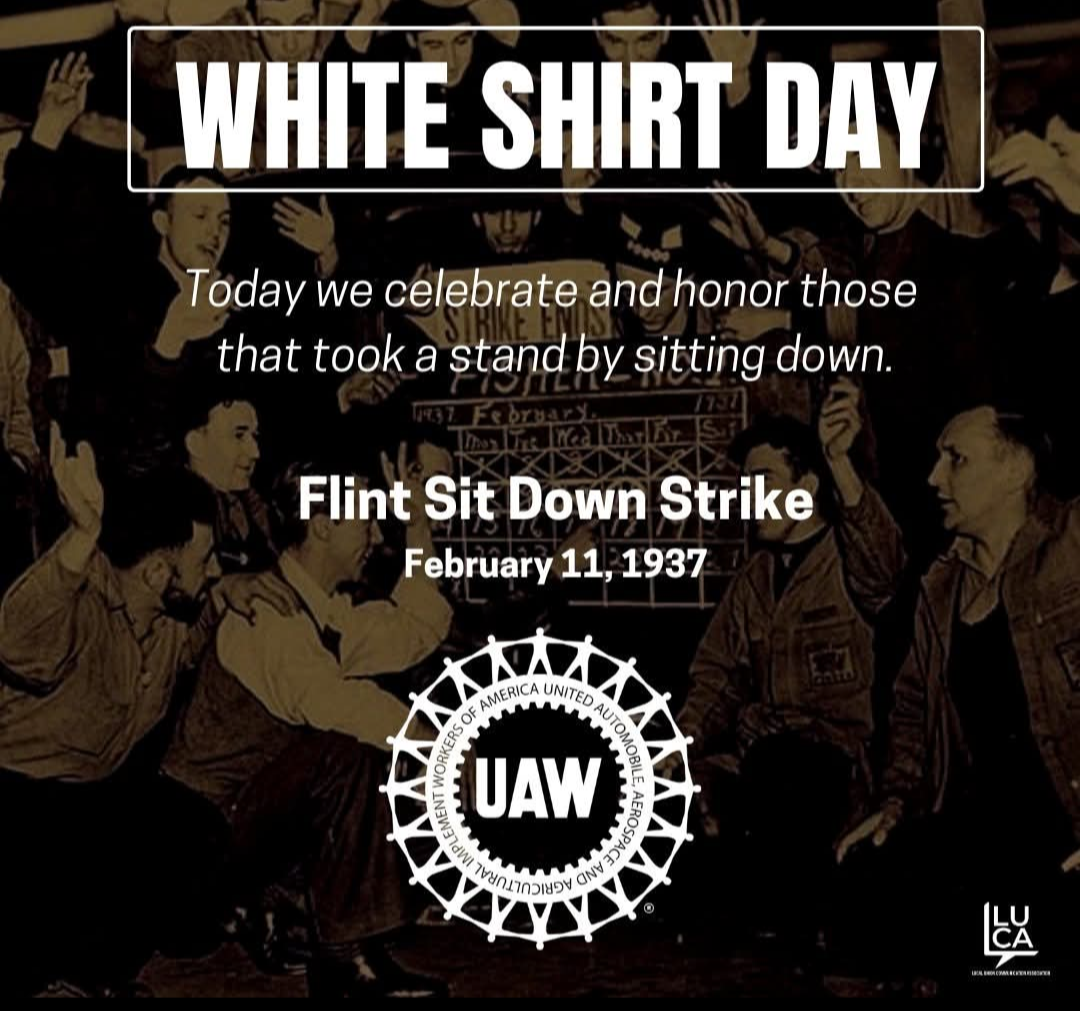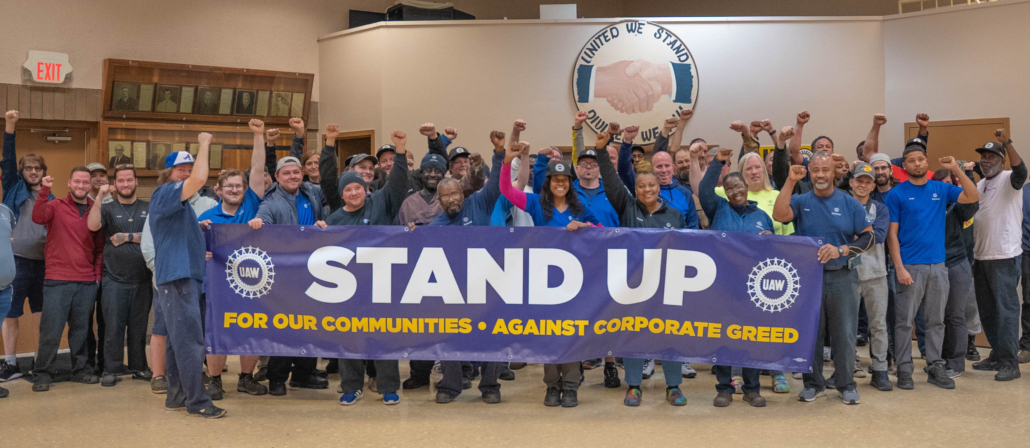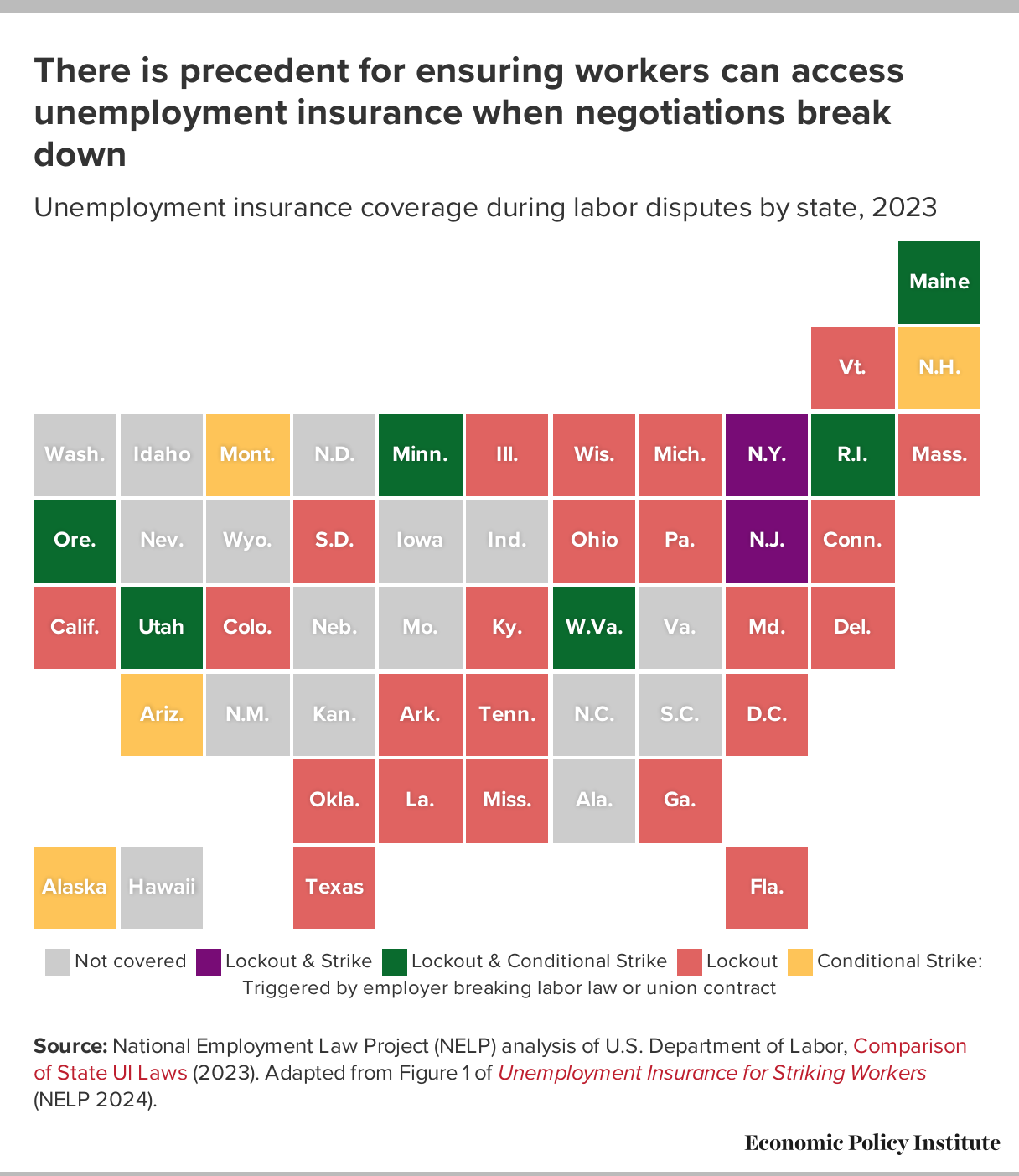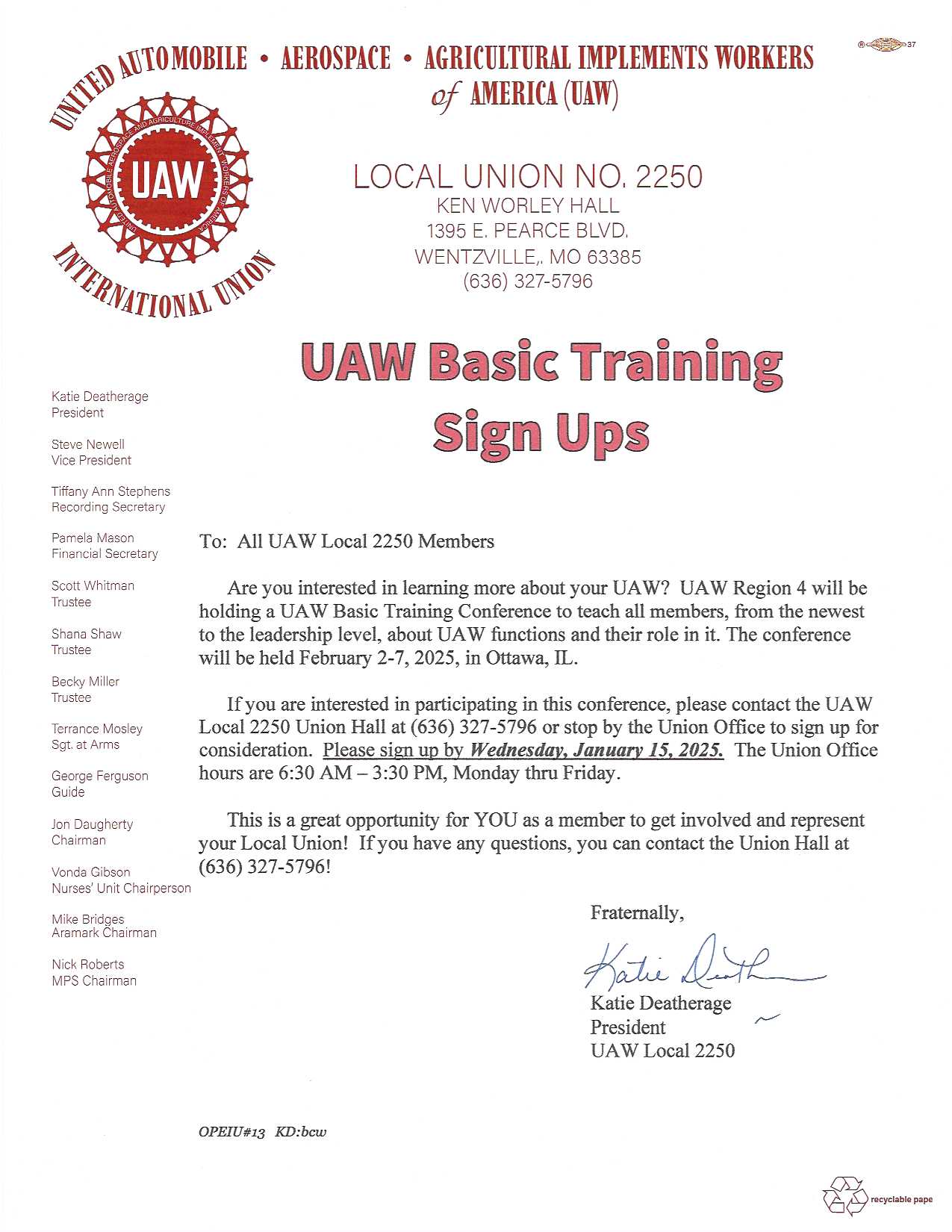-
Someone Is Trying To Change The Paid Leave You Voted For… - 24 hours ago
-
Get Your Newsline Here! - February 21, 2025
-
Welcome 61 New Members to UAW Local 2250! - February 20, 2025
-
Great Read: How UAW Benefits Shaped An Immigrant Family - February 20, 2025
-
Cool 2250 Members Make The News! - February 19, 2025
-
White Shirt Day: What It Means To You - February 18, 2025
-
This Week’s Missouri AFL-CIO Labor Report - February 16, 2025
-
Could You Use a $5000 Scholarship? Alliance Credit Union Can Help - February 15, 2025
-
Membership Meeting Next Wednesday! - February 15, 2025
-
Can You Believe That News Story? Find Out Here - February 12, 2025
Employers Productivity Standards Are Not Real Science
Labor Notes addresses the problem of speed-up and job analysis in Employers Productivity Standards Are Not Real Science…
Frank and Lillian Gilbreth (of Cheaper by the Dozen fame) expanded on this by using frame-by-frame film study of workers performing tasks with a specially calibrated “microchronometer,” documenting worker micro-motions and the time they took.
More recently, with the tremendous growth in computing power and data collection, the ability to use technology to gather data about workers is ubiquitous, and bosses are eager to use these tools to maximize productivity and profits.
Today, most production targets heavily involve computers collecting data and computing efficiency metrics. Regardless of the specific details, all systems use the concept of “normal” time (the time needed for a normal worker performing at 100 percent pace), and then convert it to a “standard” time by adding time for personal needs, fatigue, and unavoidable delay (PFD).
This multiplier purports to account for the need to use the restroom, allow for the effect of physical, mental, and environmental fatigue, and reflect unexpected delays in the normal routine.

(royalty free image)



